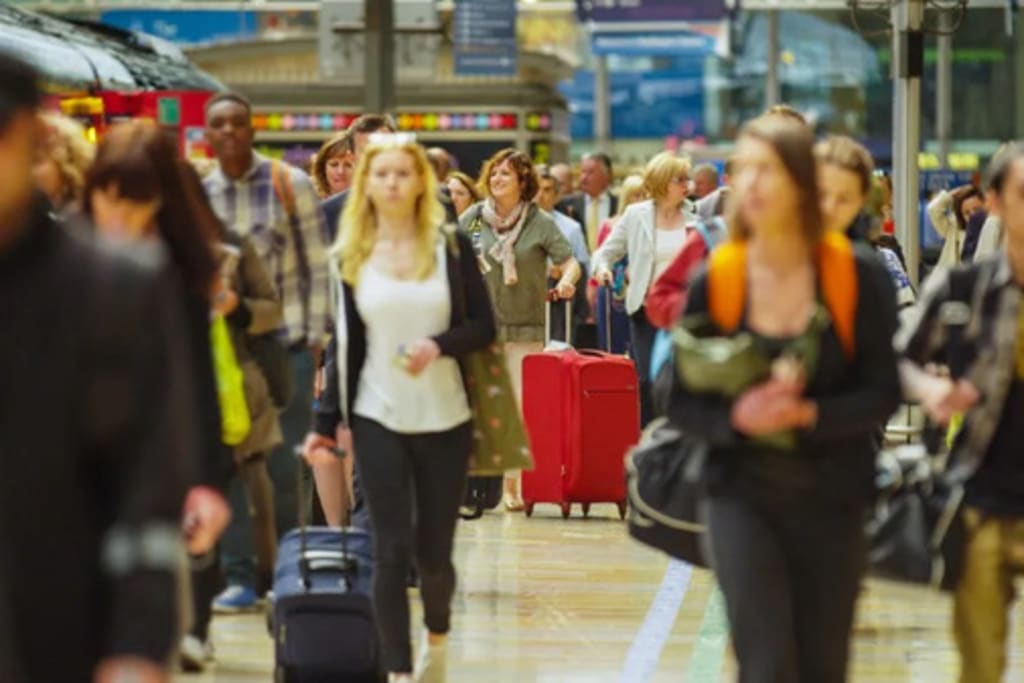Rail Strikes Disrupt Commuter Travel Amid Union and Company Disputes
Rail Strikes Disrupt Commuter Travel Amid Union

Introduction
Rail strikes are becoming a significant issue, causing daily chaos for millions of commuters. These disruptions stem from ongoing disputes between unions and rail companies, leaving many wondering how this all started and what can be done to resolve it. Let's dive into the intricate world of rail strikes and explore their wide-reaching impacts.
Background on Rail Strikes
Rail strikes are not a new phenomenon. Historically, they have been a powerful tool for workers to negotiate better terms and conditions. From the early days of industrialization to modern times, rail workers have used strikes to address grievances ranging from pay and working conditions to job security and benefits. Understanding this history helps contextualize the current situation.
Current Dispute Between Unions and Companies
The present rail strike involves several key players, primarily the unions representing rail workers and the rail companies. The unions argue that their demands for better pay, safer working conditions, and job security are not being met. On the other side, companies claim that they cannot meet these demands without compromising their financial stability. This stalemate has led to the current impasse.
Get top-notch English assignment help from experts. Our service ensures high-quality, plagiarism-free work delivered on time to boost your grades. Order now for 24/7 support and affordable prices!
Impact on Commuters
For the average commuter, rail strikes are more than just an inconvenience—they can be a significant disruption. Daily routines are thrown into disarray, leading to longer travel times, increased stress, and, in some cases, lost wages. For those who rely on rail services to get to work, attend school, or meet other obligations, the impact is both immediate and profound.
Economic Implications
The economic ramifications of rail strikes extend beyond the rail companies. Local businesses suffer as foot traffic decreases, and workers who can't make it to their jobs might lose income. Moreover, the broader economy takes a hit as productivity declines. These strikes illustrate how interconnected our transportation systems are with economic health.
Government Involvement
Governments often find themselves in a tricky position during rail strikes. They must balance supporting workers' rights with maintaining essential services. In some cases, the government may intervene by facilitating negotiations or imposing regulations to ensure minimum service levels. Their role is crucial in seeking a resolution that addresses both parties' concerns.
Union Perspective
From the unions' viewpoint, the strike is a necessary measure to ensure fair treatment for workers. They argue that without striking, their voices are not heard, and their conditions do not improve. Union leaders often emphasize the importance of solidarity and the collective power of workers to bring about change.
Company Perspective
On the flip side, rail companies contend that they face financial constraints and operational challenges that make it difficult to meet union demands. They point to rising costs and competitive pressures that require them to maintain a delicate balance between satisfying workers and remaining financially viable.
Case Studies
Looking at past rail strikes can provide valuable insights. For instance, the 2018 French rail strike saw workers protesting against government reforms. While it caused significant disruption, it also led to important negotiations and concessions. Similarly, the 2002 UK rail strike resulted in a landmark agreement that improved working conditions. These examples show that while disruptive, strikes can lead to meaningful change.
Commuter Stories
Personal stories highlight the human side of these disruptions. Consider Jane, a nurse who relies on the train to get to her early morning shifts. During the strike, she had to wake up two hours earlier and take multiple buses, making her already challenging job even harder. Social media is filled with such stories, painting a vivid picture of the strike's impact.
Alternative Transportation Options
Commuters have had to become resourceful, turning to buses, carpools, cycling, and even walking to get to their destinations. Each alternative has its pros and cons—buses can be crowded, carpooling requires coordination, and cycling is weather-dependent. Despite these challenges, many are finding ways to adapt.
Potential Solutions to the Dispute
Resolving the dispute requires creative solutions. Mediation and negotiation remain the most straightforward approaches, with both sides needing to compromise. Some experts suggest performance-based pay structures or enhanced safety protocols as potential areas of agreement. The goal is to find a sustainable solution that addresses both parties' needs.
Future Outlook
Predicting the future is always tricky, but there are a few possibilities for how this might play out. Ideally, both sides will come to the table and reach a compromise. Long-term, there may be a push for reforms to prevent such disputes from escalating to strikes. Building better communication and more flexible negotiation frameworks could be key.
Conclusion
Rail strikes underscore the complex relationship between labor and management, highlighting the need for fair treatment and sustainable business practices. While disruptive, these strikes can also serve as a catalyst for positive change, pushing both sides toward more equitable solutions. The hope is that through negotiation and mutual understanding, a resolution can be found that benefits all parties involved.
About the Creator
Sophia Baker
Hello Everyone! I have worked with Native Assignment Help UK for the past three years. A premier provider of CIPD Assignment Help services in the UK.
Enjoyed the story? Support the Creator.
Subscribe for free to receive all their stories in your feed. You could also pledge your support or give them a one-off tip, letting them know you appreciate their work.






Comments
There are no comments for this story
Be the first to respond and start the conversation.